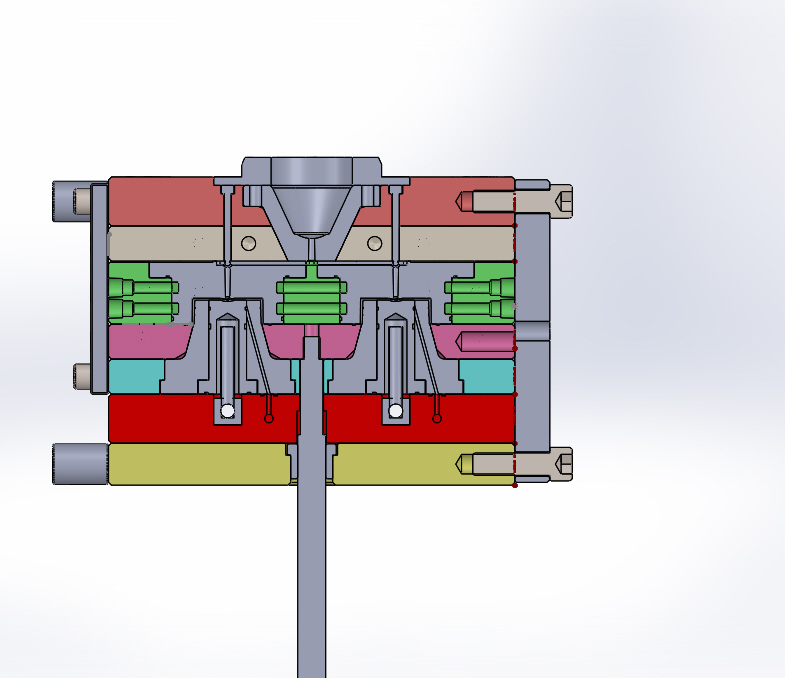- Home
- Lean Principles
- Machine Selection
- Mold Design
- Mold Interlocking
- Mold Making
- Plastic Material Technology
- Molding Process
- Plastic News
- What's New
- Privacy Policy
- Disclaimer
- Site Map
- Poll
- Polishing
- 3D Rapid Prototyping
- Molding Companies
- Contact Us
- Proven Thinwall Packaging Mold Designs For Sale
- MOLD WEIGHT CALCULATOR
- HOT RUNNER VERSUS COLD RUNNER
Lean Manufacturing Principles And Their Benefits
Lean manufacturing principles are used to create lean techniques that aim to build and maintain the most efficient manufacturing business possible.
One of the key principles in lean manufacturing is to view things from the customers perspective. Getting and using feedback from customers about your product line will ensure you make products that satisfies their needs.
What’s more, customer feedback ensures resources are not wasted on making a product that has features that they are not interested in and not willing to pay for.
How Can Lean Manufacturing Principles Benefit Injection Molding?
Many people initially believe that lean techniques are mostly about cost reductions. In fact, they provide the one feasible way to cut costs while also shortening lead times and times to market, improving quality, and providing customers with exactly what they want precisely when they want it.[1]
One of the principles used to achieve these benefits is to eliminate all waste in a manufacturing process. Waste is any action that does not add value to the end customer.
In injection molding, the most obvious example of waste is making defect parts. This is frequently due to poor mold design. Mold design must be right from the beginning which will not only save you years of frustration of having to deal with quality issues and disgrunted employees but will also improve cycle times.
Another example is the energy consumption used to make each part. Just because you use 30% more energy than your competitor, it doesn't mean customers are willing to pay more for your parts. They will probably go for the cheapest price.
This is why molders need to identify areas of waste.
There are literally dozens of examples of waste in plastic injection molding plants such as longer than necessary cycle times due to poor part design, poor mold design or operator incompetence.
Click here to learn how to reduce cycle time and save costs.(opens in a new window)
Another example is the lack of training in proper molding techniques. Insufficient training can result in costly mold and machine damage.
When properly implemented, lean manufacturing principles can deliver many benefits.
Some other benefits include:
- Higher employee morale (which naturally improves productivity)
- Establishing a reputation as a quality and reliable supplier (this will increase your customer base)
Given these benefits, one would think lean implementation would be standard practise in the industry but this is not the case. During the past 20 years plastic injection moulding companies in western countries have preferred to move some or all of their manufacturing operations offshore to lower cost countries.
Fortunately, this trend is showing signs of reversing mainly due to the realization that profit margins were not as high as expected. As a result, injection molding and mold making industries are slowly recovering in many western countries such as Australia and America.
As this trend continues, it will not be sufficient to just sit back and wait for a full recovery. Long term survival of an injection molding company hinges on the ability to eliminate waste across the entire firm and make parts that satisfy customers needs.
Lean manufacturing principles provide a vehicle to see where waste exists and how to eliminate it. One would expect that these principles will grow in popularity now that off shoring has not lived up to expectations.
Click here to learn about the 4 most common mistakes in injection molding.(opens in a new window)
Lean Techniques
One of the most common techniques is lean 5s. Click here to learn how lean 5s can benefit your injection molding business.
Another common technique is the 7 wastes. Click here to learn how the 7 wastes can benefit your injection molding business.
Challenges
Convincing Upper Management
The biggest challenge is getting long term commitment from upper management. They need to understand how the long term benefits of implementing a lean manufacturing program outweigh the short term inconvenience of modifying the way employees think and participate in a firm.
Guaranteeing Worker Job Security
Workers naturally feel threatened by any change in their job roles – especially one that involves cost cutting. That’s why it is critical that upper management guarantee job security at the beginning of a lean program and keep this promise.
Over time employees will gain confidence in the changes as they see the benefits of a program. The result will be constructive participation by all employees.
Additional Comments
To be most effective using lean manufacturing principles the concept needs to be embraced across the entire company. A lean manufacturing program should cover all aspects of the business. It can be applied to office environments as well as manufacturing processes.
Just cherry picking certain areas for improvement will not give long term sustainable benefits to the company.
Return from Lean Manufacturing Principles to Home Page
References
[1] Womak, James P.; Jones, Daniel T. (2003) Lean Thinking.





